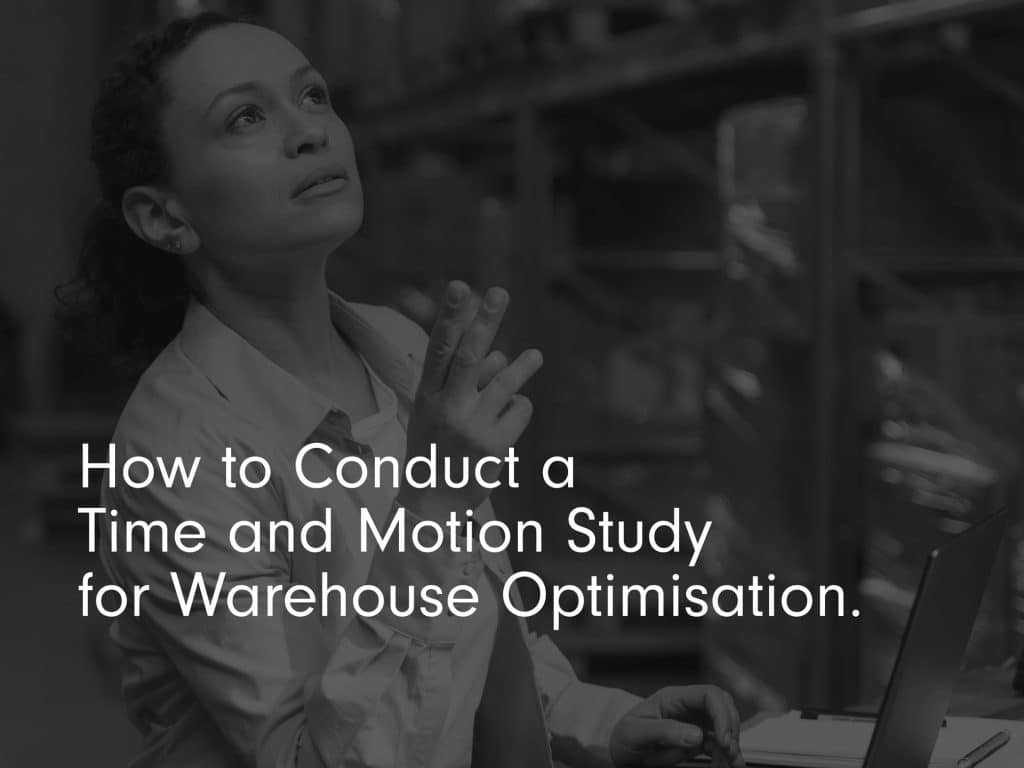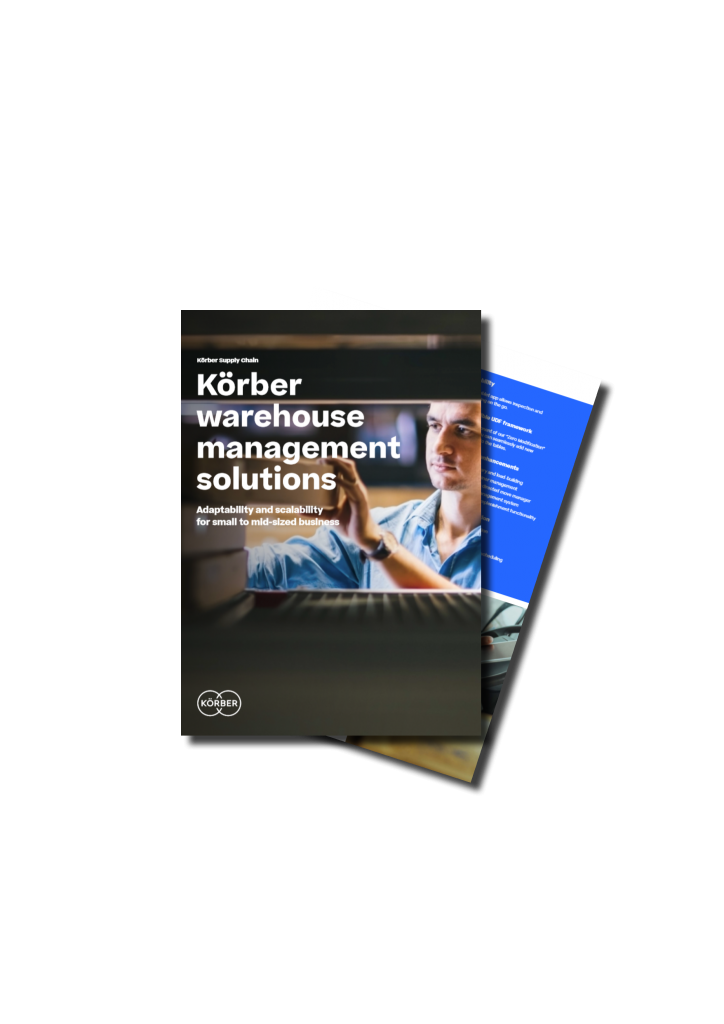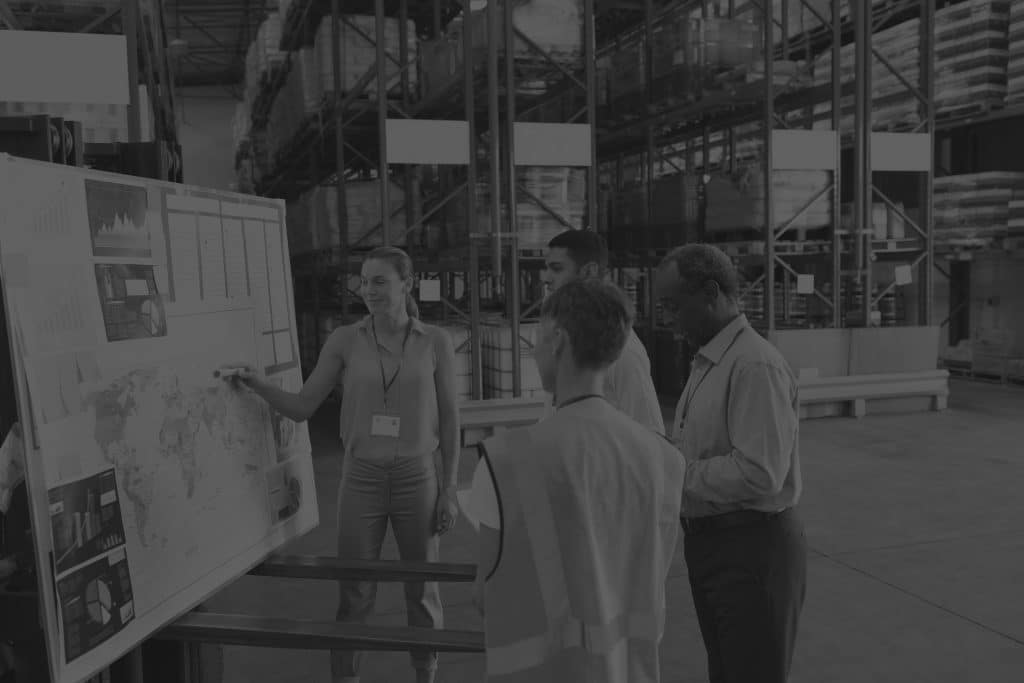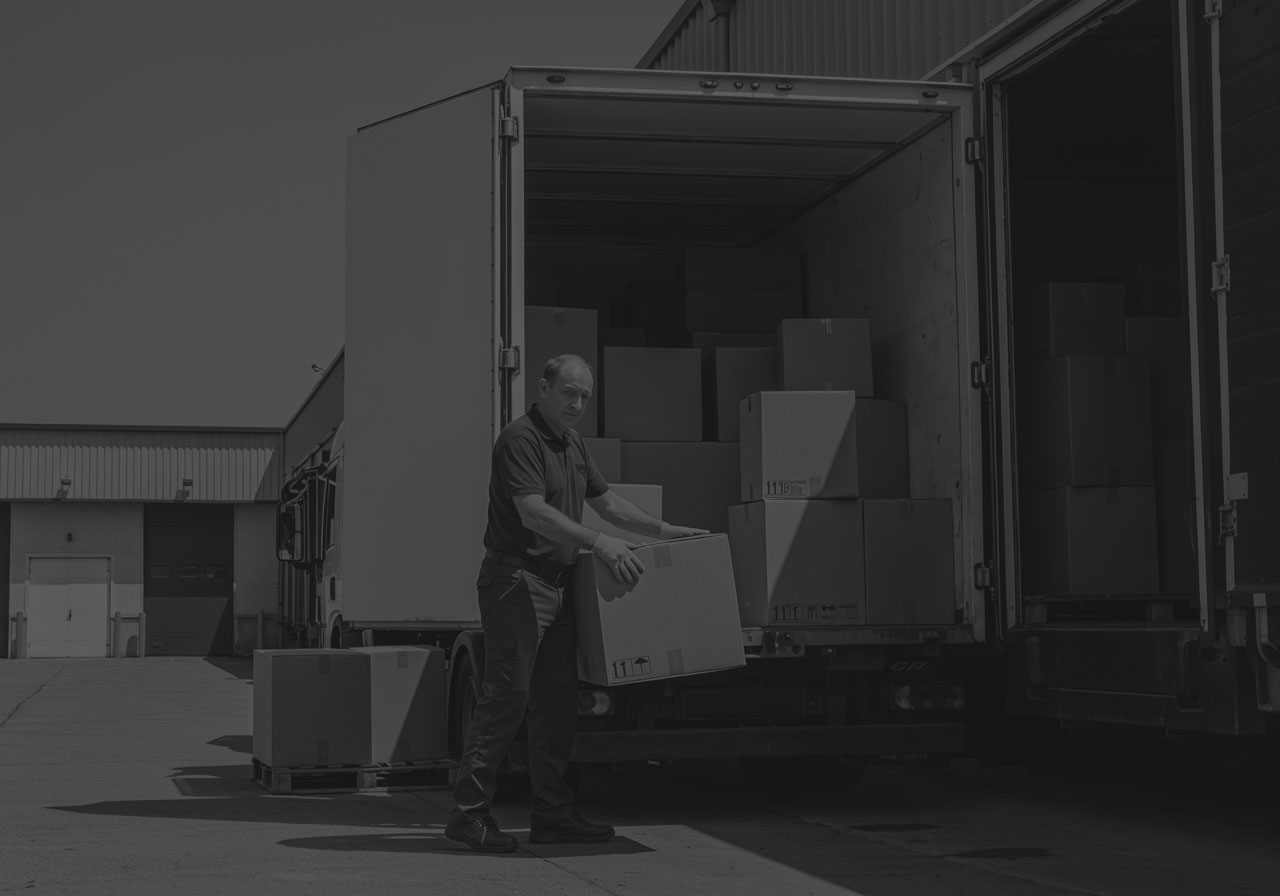How to Conduct a Time and Motion Study for Warehouse Optimisation.

Is your warehouse running at peak efficiency? If challenges like poor layouts, outdated processes, or the pressures of rising e-commerce demand are holding you back, the answer might already be within reach: time and motion studies.
Often seen as an outdated practice, time and motion studies have evolved into a sophisticated, data-driven tool that can revolutionise warehouse operations. While automation and advanced software typically dominate discussions about optimisation, the importance of these studies should not be underestimated—they offer a vital opportunity that many overlook.
Picture eliminating wasted motions, optimising workflows, and empowering your team to reach peak performance—all while saving time and cutting costs. This vision becomes reality by leveraging the potential of modern time and motion studies.
Want more like this?
Download our free guide now.

The Challenges Modern Warehouses Face.
First, let’s address the common pain points in warehouse management. Operations and supply chain leaders consistently face:
Inefficient Layouts:
Poorly designed layouts lead to excessive travel time, wasted movement, and delayed fulfilment. Simply walking extra steps due to misplaced SKUs can add hours to your team’s daily workload.
Without continuous process evaluation, bottlenecks creep in, turning seemingly small delays into significant inefficiencies.
Lack of Real-Time Data:
Warehouses relying on manual tracking or delayed reporting often miss out on actionable insights that drive improved decision-making. With a warehouse management system, gain complete visibility of your warehouse operation.
Adapting to E-commerce Demands:
The surge in e-commerce demands has reshaped supply chains. Without optimised workflows, keeping up with increasing volume and delivery expectations proves daunting.
Labour, energy, and resource waste all compound inefficiencies, squeezing profitability margins tighter than ever.

Why Time and Motion Studies Are Essential.
Contrary to common misconceptions, time and motion studies are far from outdated. Thanks to advanced tools like motion tracking technology and data analytics, they’re more insightful than ever. These studies observe and evaluate the steps within warehouse workflows, seeking to eliminate wasted time and effort. Here’s what they can do:
Identify Hidden Inefficiencies:
Motion tracking shows where tasks like picking and packing slow down, helping cut unnecessary steps, costs, and time.
Set Measurable Benchmarks:
By standardising workflows, time and motion studies provide performance benchmarks, which can be used for training and maintaining consistent productivity.
Enable Strategic Cost Savings:
Small changes, like cutting SKU travel time or using better picking strategies, can save warehouses significant costs
| Description | Activity | Measurement | Result |
|---|---|---|---|
| Identify Key Processes | Select core warehouse activities to study | Time spent on each process | A clear understanding of high-impact processes |
| Observe and Record | Monitor employees during tasks | Seconds or minutes per action | Accurate data on task durations |
| Analyze Workflow | Break down steps in each activity | Number of steps per task | Insights into bottlenecks or inefficiencies |
| Benchmark Performance | Compare against industry standards | Productivity metrics | Identification of areas for improvement |
| Implement Improvements | Apply process changes and tools | Efficiency post-implementation | Noticeable gains in speed and productivity |
| Monitor and Refine | Continuously review updated processes | Ongoing time and motion analysis | Long-term optimization and agile operations |
Table 1. A description of the task performed in a time and motion study, the activity performed, how it is measured, and the end result.

Debunking Common Misconceptions About Time and Motion Studies.
Many misinterpretations about time and motion studies lead organisations to overlook their benefits. Here’s the truth:
“They’re Outdated”:
Advanced tools like AI, sensors, and data analytics have revitalised this method, making it more applicable than ever.
“Efficiency Equals Cutting Corners”:
Optimising processes doesn’t mean sacrificing quality. It means creating workflows that eliminate waste while maintaining operational standards.
“Automation is the Only Solution”:
Automation works best when informed by time and motion data. For example, installing robots in inefficient workflows will only automate inefficiencies.
“Employees Don’t Need to Provide Input”:
Employee insights are critical. Workers often offer practical suggestions for improving processes based on their day-to-day experience.

Leveraging Modern Tools for Time and Motion Studies.
Today’s time and motion studies combine traditional observation with cutting-edge technology to provide meaningful insights. Here’s how:
Motion Tracking Technology:
Tools like RFID systems and AI-powered sensors monitor employee and material movement patterns in real time. These tools help quantify inefficiencies; for example, identifying unnecessary steps in frequently picked paths.
Real-Time Data Analytics:
Combining motion tracking with analytics platforms enables warehouse leaders to gain actionable insights. For instance, AI tools can instantly identify if certain tasks consistently deviate from standard benchmarks and recommend improvements.
With software capable of visualising motion data, it becomes easier to redesign workflows and warehouse layouts for maximum efficiency.

Redesigning Warehouse Layouts Using Time and Motion Data.
Irrespective of workforce training and technology integration, warehouse layout is crucial when it comes to operational efficiency. Proper layout redesign based on motion and efficiency insights can:
- Reduce travel distances by consolidating frequently accessed SKUs into high-demand zones.
- Increase throughput by streamlining workflows and reducing congestion in high-traffic areas.
- Tools like heatmaps, generated through motion-tracking systems, visually illustrate the busiest warehouse routes and areas that need improvement.
Enhancing Team Productivity Through Training.
A crucial but often overlooked aspect of warehouse efficiency is investing in human capital. Training employees on optimal movement techniques can yield notable benefits:
- Reductions in unnecessary steps help prevent worker fatigue and minimise workplace injuries.
- Well-trained teams not only perform better but are also more likely to adapt positively to process changes.

Time and Motion Study Template.
Below you will find a Time and Motion template of how to conduct a study:
Step 1: Define Objectives
- Goal: Clearly outline the purpose of the study (e.g., reduce waste, optimise performance, identify inefficiencies).
- Key Metrics: Identify specific variables to measure, such as task duration, idle time, or output per hour.
- Scope: Determine the boundaries of the study (which processes, teams, or departments to assess).
Step 2: Analyse Existing Processes
- Process Mapping: Create a detailed flowchart of the current workflow or series of steps in the process.
- Task Identification: Break down each activity into granular tasks to ensure no steps are overlooked.
- Observation Period: Establish a representative period for data collection to ensure reliability and accuracy.
Step 3: Collect Data
- Time Tracking: Use time studies to record the duration of each task, either manually or with time-tracking tools.
- Motion Observation: Record physical movements, identifying unnecessary or repetitive actions.
- Documentation: Maintain detailed records of findings, including timestamps, task sequence, and notes on inefficiencies.
Step 4: Analyse Data
- Bottleneck Detection: Identify areas where delays, redundancies, or inefficiencies occur.
- Performance Variance: Compare actual times and motions against benchmarks or expected standards.
- Data Visualisation: Use charts or diagrams to present findings for clear communication.
Step 5: Develop and Implement Improvements
- Streamline Steps: Eliminate unnecessary motions or combine redundant tasks.
- Introduce Tools or Technology: Consider automation or software solutions to enhance efficiency.
- Employee Feedback: Collaborate with teams to ensure adjustments are practical and effective.
Step 6: Evaluate Changes
- Performance Metrics: Measure post-implementation performance to assess progress.
- Qualitative Feedback: Gather input from employees to understand the impact of changes.
- Iterative Adjustments: Make ongoing refinements based on results and emerging needs.
Step 7: Establish Continuous Monitoring
- Periodic Reviews: Schedule regular check-ins to ensure processes remain optimised over time.
- Training and Support: Provide resources and skills development for employees to align with updated workflows.
- Agile Updates: Stay flexible to adapt to evolving goals, technologies, or market conditions.
| Step | Action | Outcome |
|---|---|---|
| 1. Define Objectives | Clearly articulate the purpose of the study and the specific goals to achieve. | Establishes a clear focus and aligns expectations for outcomes. |
| 2. Identify Tasks | Break down the workflow into distinct tasks or activities to be analyzed. | Provides a comprehensive understanding of the process structure. |
| 3. Select Participants | Choose representative employees or workers to observe during regular operations. | Ensures the study reflects realistic workplace conditions and practices. |
| 4. Collect Data | Observe tasks, record time taken, and note any variables impacting efficiency. | Gathers accurate, detailed information for analysis. |
| 5. Analyze Findings | Review the collected data to identify patterns, delays, or opportunities for improvement. | Highlights inefficiencies and areas for optimization. |
| 6. Develop Solutions | Propose actionable recommendations to address identified inefficiencies. | Provides a roadmap for enhancing productivity and streamlining operations. |
| 7. Implement Changes | Introduce improvements while engaging stakeholders for support and feedback. | Ensures solutions are effectively integrated and accepted by the workforce. |
| 8. Monitor and Refine | Regularly evaluate changes and refine processes as necessary. | Maintains continuous improvement to adapt to evolving needs and challenges. |
Table 2. The steps, action, and outcome from each activity when performing a time and motion study.
Time and Motion Study Example.
This time and motion study sample considers the case of a manufacturing assembly line tasked with producing electronic components. The objective is to increase efficiency and reduce production bottlenecks.
- Define the Process: The assembly process is divided into identifiable tasks. For instance, the tasks include soldering, screwing, and quality inspection. Each task is mapped sequentially.
- Measure the Time: Analysts use precise time-tracking tools to record how long workers take to complete each task. For example, soldering takes 45 seconds per component, while quality inspection requires 60 seconds.
- Analyse Motion: Observations focus on workers’ movements to identify redundancies. For instance, it is noted that workers move repeatedly to fetch tools from distant storage areas, leading to wasted time.
- Optimise Workflow: To streamline the process, tools are reorganised to be within arm’s reach, and task overlaps are eliminated. Additionally, tasks with excessive durations, such as quality inspection, are split among two team members.
- Implement Changes and Monitor: After redesigning the workstation and redistributing tasks, time measurements are repeated. The process shows a marked reduction in cycle time, improving production rates by 20%.
This example demonstrates how a systematic time and motion study can enhance operational efficiency and reduce wasted effort.

Your Next Step to Warehouse Optimisation.
Struggling with inefficiencies or rising costs in your warehouse operations? At Balloon, our experts specialise in optimising warehouses through various systems, such as applying time and motion principles and design tailored software solutions for your business.
Get in touch today for your free consultation and find out how warehouse technology can upgrade your supply chain.
Download our free guide now.

Frequently Asked Questions (FAQ's)
Time and Motion Studies are analytical techniques used to evaluate the efficiency of workflows and processes. By recording and analysing the time taken to perform tasks and the movements involved, businesses can identify inefficiencies, streamline operations, and improve overall productivity.
These studies help identify redundancies, optimise task sequencing, and enhance worker productivity. They can lead to reduced operational costs, simpler training processes, and improved employee satisfaction by eliminating unnecessary tasks and fostering a more efficient workflow.
Modern Time and Motion Studies leverage advanced tools such as motion tracking software, sensors, and data analytics platforms to accurately collect and analyse data. These technologies provide actionable insights that were difficult to achieve with traditional methods.
Time and Motion Studies are typically conducted by experienced industrial engineers or operational consultants. The duration depends on the complexity of your operations but can range from a few weeks to several months for a comprehensive analysis.
Yes, many recommendations can be implemented promptly with minimal disruption to operations. However, some changes, like implementing new workflows or redesigning layouts, may require additional planning and resources to execute effectively.
Both technologies enable rapid identification of affected products during recalls, but with different approaches. Barcode systems create transaction-based traceability with user-initiated scans at key points. RFID provides more continuous visibility with less reliance on manual procedures. When integrated with Körber WMS, either technology supports the detailed batch tracking required for targeted recalls.
Absolutely. Time and Motion Studies are scalable and can provide significant benefits irrespective of the size of the operation. Small and mid-sized warehouses, in particular, can capitalise on these insights to optimise resources and gain a competitive edge.
Absolutely. Time and Motion Studies are scalable and can provide significant benefits irrespective of the size of the operation. Small and mid-sized warehouses, in particular, can capitalise on these insights to optimise resources and gain a competitive edge.
Getting started is easy—contact us to schedule your Warehouse Efficiency Consultation. Our experts will assess your needs and design a tailored Time and Motion Study to help your business thrive.





